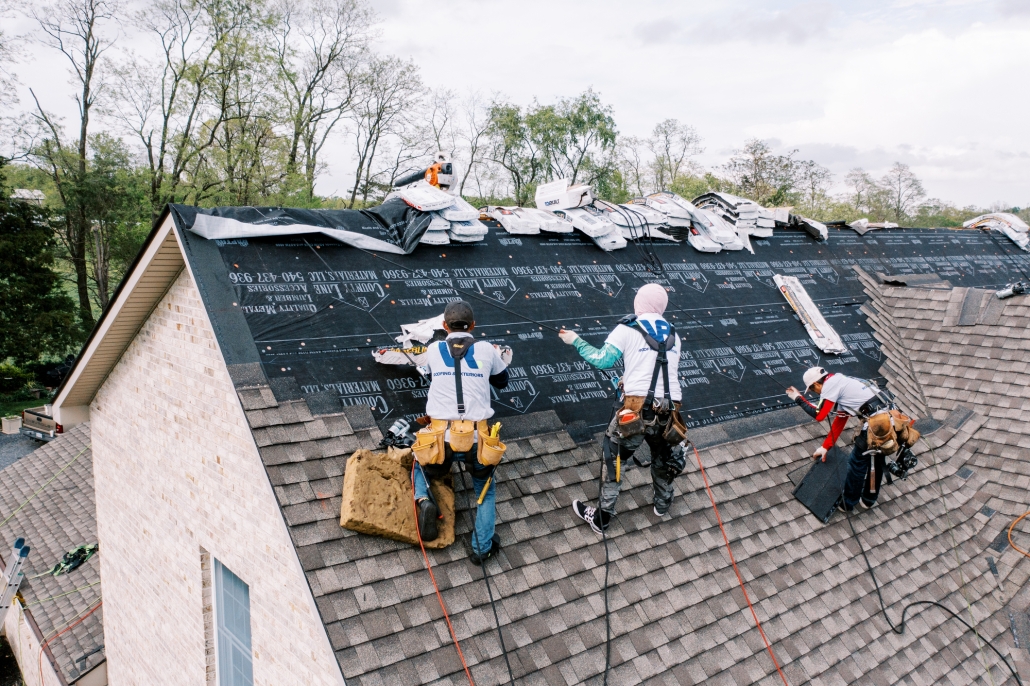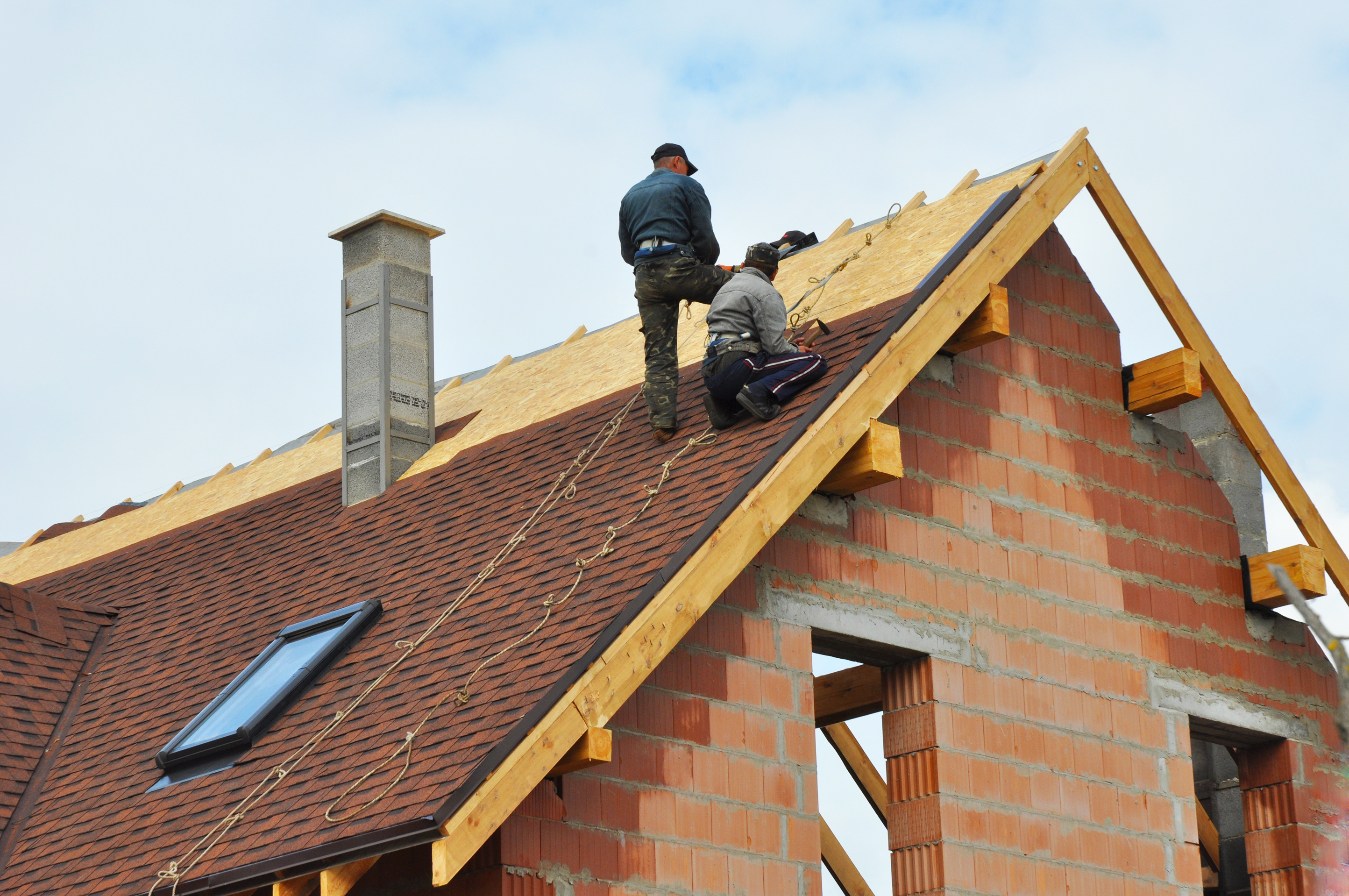Vital Questions to Ask Gainesville Roofing Companies Before Employing
Vital Questions to Ask Gainesville Roofing Companies Before Employing
Blog Article
Ideal Practices for Ensuring Appropriate Roof Covering Air Flow
Making sure correct roof ventilation is critical for the durability and performance of a roof. A well balanced consumption and exhaust vent proportion, commonly 1:300, plays a pivotal duty, with intake vents ideally placed at the lower edge of the roof covering for cool air entry and exhaust vents at the peak for cozy air exit. Routine inspections to determine blockages and maintain clear air flow are critical. In addition, maintaining insulation far from vents is critical to stop airflow constraint. Recognizing these foundational components sets the stage for more thorough understandings into installation and upkeep practices that can significantly boost your roof system's performance.
Understand Air Flow Essentials
Effectively recognizing air flow fundamentals is essential for making sure the durability and efficiency of roof covering systems. Reliable air flow alleviates moisture build-up and temperature extremes in the attic, both of which can lead to considerable structural damages with time. A well-ventilated roof assists in preventing usual issues such as mold and mildew growth, timber rot, and ice dams, which can endanger the stability of the roof covering products and the underlying structures.
The primary objective of air flow is to promote the activity of air, permitting a constant exchange in between the outdoor and indoor settings. This balance is accomplished with a mix of intake and exhaust vents that collaborate to maintain optimal air flow. Consumption vents, usually located along the soffits or eaves, enable fresh air to get in the attic area, while exhaust vents, often located at or near the roofing system ridge, allow hot, humid air to run away.
Trick elements influencing the efficiency of roof covering ventilation include appropriate placement, sufficient sizing, and making certain that both intake and exhaust vents are unhampered. Regular inspection and maintenance are important to determine possible obstructions, damage, or inadequacies in the ventilation system, thereby guarding the roof covering's efficiency and resilience.
Kinds of Roofing Vents
Roofing vents play an essential function in keeping reliable attic air flow and, by expansion, the general health of the roof system. Different kinds of roofing vents are readily available, each with distinct advantages tailored to particular roof covering needs.

Soffit vents are mounted under the eaves and operate in tandem with roof vents to guarantee a well balanced intake and exhaust system. By enabling cooler air to enter from below, soffit vents promote the expulsion of hot air through top vents. Gable vents, located on the outside walls of the attic room, deal one more efficient service, specifically in homes with saddleback roofs.
Evaluate Your Existing Ventilation

Next, think about the age and condition of your roof materials and ventilation components. Older systems might not comply with present building regulations or may have worn away gradually, reducing their effectiveness. Conduct a comprehensive examination to recognize any kind of indications of damage, such as rust, damages, or voids that could endanger the system's go efficiency.
In addition, measure the attic temperature and moisture levels. High temperatures and humidity can suggest poor air flow.
Setup Best Practices
Effective installment of roof covering air flow systems is vital for making certain optimum performance and longevity. Correct installation starts with recognizing the certain ventilation demands of the roofing system and the structure it covers. This entails calculating the appropriate ratio of consumption to exhaust vents, typically sticking to the 1:300 rule, which states one square foot of ventilation for every 300 square feet of attic room floor space.

The placement of vents is just as important. Intake vents should be set up at the roof's lower side, commonly in the soffits, to permit awesome air to get in. Exhaust vents, on the other hand, ought to be set up near or at the roofing's hop over to these guys top to help with the leave of cozy, damp air. This creates a natural air flow that aids maintain temperature level and wetness equilibrium within the attic room room.
Seal all air vent links diligently to stop air leaks and prospective water seepage. Use high-grade materials and follow producer guidelines to make certain durability and efficiency. Additionally, incorporating ridge vents with baffles can significantly boost air movement performance by protecting against wind-driven rain and snow from getting in the attic.
Eventually, exact installation of roof air flow systems mitigates possible problems such as mold and mildew development, ice dams, and architectural damage, guaranteeing the roof covering's stability and the structure's general health and wellness.
Normal Upkeep Tips
Uniformity in maintenance methods is fundamental to making certain the long-lasting effectiveness of roofing air flow systems. During these inspections, make certain that vents are cost-free of particles, nests, and other blockages that might hamper air flow.
Use a soft brush or a vacuum to get rid of dirt and particles from consumption and exhaust vents. Be mindful not to harm the vent screens or louvers throughout the procedure.
Appropriate insulation is equally vital. Ensure that attic room insulation does not block the vents, as this can significantly limit air movement. If any type of insulation has moved or resolved, rearrange or replace it to keep a reliable barrier.
Finally, replace any kind of damaged or missing parts without delay. Broken vents, split tiles, or deteriorated flashing can all add to inadequate air flow and needs to be dealt with without hold-up. Regular upkeep makes certain that the roofing air flow system functions efficiently, thereby extending the lifespan of the roof covering itself.
Conclusion
Making certain appropriate roof ventilation is paramount for keeping the efficiency and sturdiness of a roof covering system. Adherence to the 1:300 consumption and exhaust vent proportion, coupled with the calculated positioning of vents, is crucial.
A well balanced consumption and exhaust air vent proportion, generally 1:300, plays an essential function, with consumption vents preferably put at the reduced side of the roofing system for great air entry and exhaust vents at the top for warm air exit. Intake vents, generally located along the eaves or soffits, allow fresh air to go into the attic space, while exhaust vents, frequently positioned at or near the roof ridge, allow warm, humid air to get away.
Soffit vents are installed under the eaves and work in tandem with roofing vents to ensure a well balanced consumption and exhaust system. By enabling cooler air to get in from below, soffit vents assist in the expulsion of warm air with upper vents. Adherence to the 1:300 intake and exhaust air vent proportion, combined with the strategic positioning of vents, is crucial.
Report this page